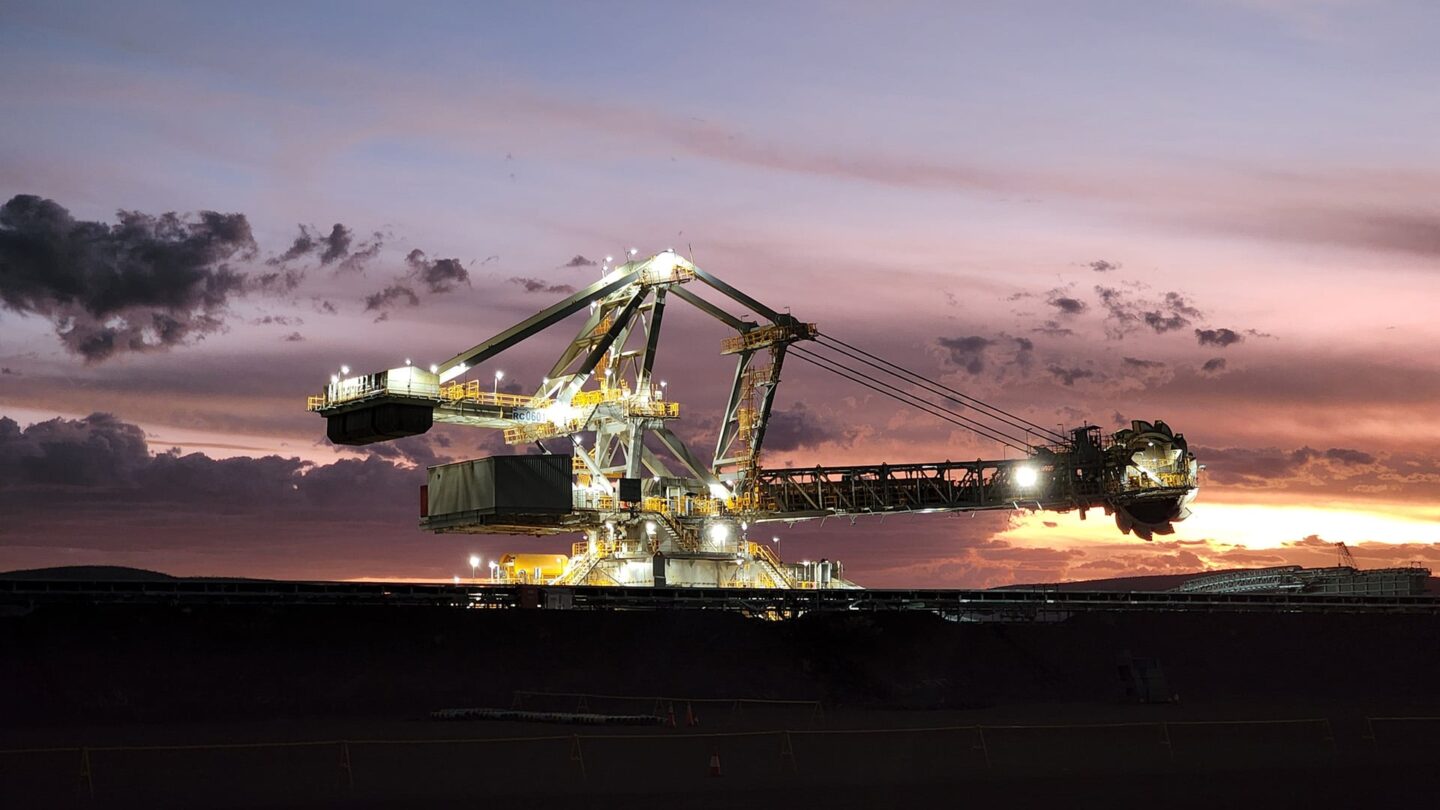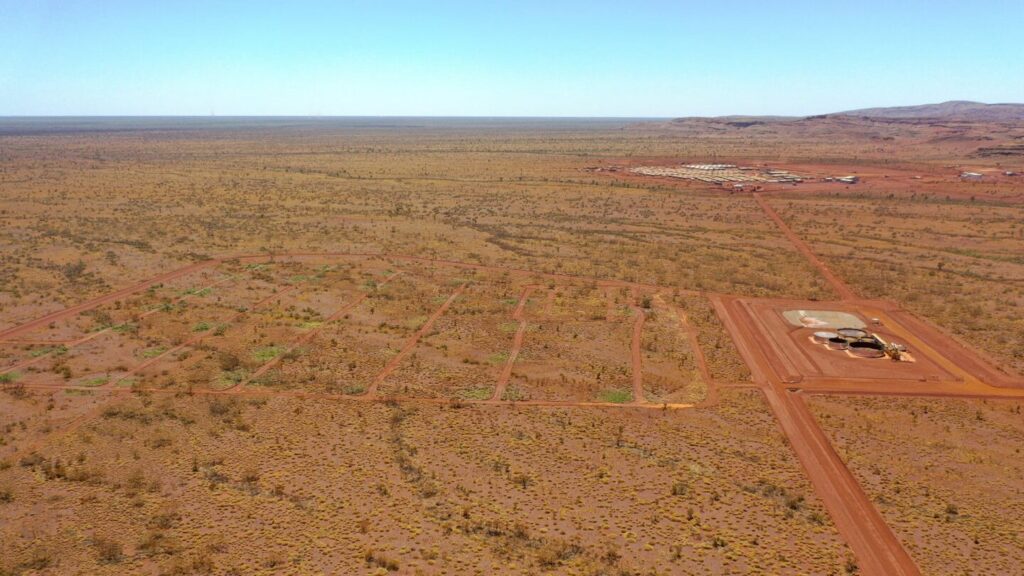
The Gudai-Darri iron ore mine is Rio Tinto’s first greenfield mine in the Pilbara, Western Australia, in more than a decade, and has endured its share of setbacks. Already producing ore almost a year behind schedule, and with a budget creeping above $3bn, the mine has the potential to go down as one of the more expensive and infamous missteps in the company’s recent history.
Yet the swathe of innovative technology in place at Gudai-Darri means hope remains high for the project, and Rio Tinto is optimistic that the mine will aid future production of the company’s flagship Pilbara Blend product of iron ore, which makes up around 70% of the miner’s total supply of the ore.
Production will continue to ramp up through the remainder of this year and is expected to reach full capacity during 2023, ahead of a potentially rosy future. The mine has an expected life of more than 40 years and an annual capacity of 43Mt (million tonnes), and a feasibility study to support an expansion of this new hub is also underway.

In a statement Simon Trott, Rio Tinto iron ore chief executive, said: “The commissioning of Gudai-Darri represents the successful delivery of our first greenfield mine in over a decade. It sets a new standard for Rio Tinto mine developments through its deployment of technology and innovation.”
Digital twins and autonomous trucks
Mark Davies, Rio Tinto chief technical officer, notes that: “In building this new hub we have brought together the best of our innovations, including autonomous trucks, trains and drills. This suite of autonomous assets complements the planned deployment of other leading-edge technologies.”
Chief among these new innovations is a full digital replica of the processing plant, known as a ‘digital twin’. Digital twins are a virtual version of an asset that incorporates a process model and draws in real-time feedback from process instrumentation, power and water usage. They allow for the reliable prediction of changes over the lifetime of the mine, and are sophisticated enough to take into consideration how changes in ore quality and head grade could affect operations.
It also collects below surface geological data. This allows teams to monitor and respond to data collected from the plant. The autonomous assets are monitored remotely from Rio Tinto’s Operations Centre 1,500 kilometres away in Perth, and the digital data is used to provide an interactive 3D environment for virtual reality training.
Similarly, the use of autonomous vehicles in mining has been growing rapidly since the first Komatsu autonomous trucks entered into production in 2008 according to Michael Lewis, technical director at Komatsu.
Much of this has been driven by concerns over worker safety; a report from the Global Mining Guidelines Group calls for a “system safety approach” for mining companies deploying and using autonomous systems. The group says there is an urgent need to addresses the use of autonomous systems within the mining industry, both surface and underground.
Chirag Sathe, project co-leader and principal mining systems at BHP, commented in the paper: “With an ever-increasing use of technology in mining, particularly in surface mining equipment, it is important to understand the overall impact of systems implementation on safety.”
Production gains
Lower-than-expected iron ore production put Rio Tinto under significant pressure earlier this year. Labour shortages combined with supply chain issues impeded the Anglo-Australian mining giant’s efforts to ramp up its Pilbara operations, and it shipped just 71.5Mt of iron ore in the three months to 31 March, compared with 77.8 Mt a year earlier.
But by the second quarter there was a definite improvement, setting the stage nicely for the start of production at Gudai-Darri. A total of 79.9Mt was shipped from Pilbara, which represents a 12% increase on the first quarter, and speaking in August at the Melbourne Mining Club Kellie Parker, Rio Tinto chief executive, said further increases can be expected when the Pilbara power supply gets into full swing.
“The Pilbara offers one of the best opportunities in the world to harness solar and wind power for energy generation at our assets,” said Parker. “We are working to establish an integrated network of solar and wind power sources and have called for proposals for at least four gigawatts of large-scale solar and wind capacity in Queensland.”
The Pilbara solar farm is expected to supply about a third of the mine’s average electricity from August. This will be complemented by a new lithium-ion battery energy storage system.
Gudai-Darri is just one of a quartet of projects Rio Tinto has embarked on in recent years, as the miner looks to expand its operations and increase production. Other projects, including West Angelas and Western Turner Syncline Phase 2, came online last year with Robe Valley expected in the September quarter. These are collectively aimed at replacing 130Mt of capacity from other sites.
The cost of innovation at Gudai-Darri
However the mine, which could be one of the most sophisticated in the world, has come at a high cost. Production was several months late, and Trott conceded that there was a $500m cost overrun, but he defended it as well as the delays telling the West Australian that in addition to the Covid-19 impacts, “supply chain disruptions and inflation could not have been foreseen in the project’s original costings.”
The original budget for the mine had been $2.6bn with first ore scheduled late 2021, but the capital cost is now expected to be $3.1bn. However, Rio Tinto’s iron ore production volumes and product mix is expected to be improved in the second half of this year as a result of the Pilbara mine commissioning. In the first quarter of this year, lower than expected iron ore shipments put Rio Tinto under considerable pressure. ’
Rising costs have been observed across the Australian mining sector, with constant technological innovation and production expansion coming with a hefty price tag. The West Australian reported that the Fortescue Metals Group was forced to twice update the cost of its Iron Bridge magnetite project in the Pilbara. Estimates for the project have risen by $1bn to between $3.6bn and $3.8bn.
Like Rio Tinto, Fortescue is determined to ‘green’ it’s mining process. It has established a research and development facility at Hazelmere in Perth, where a ‘green team’ is working to develop the world-first infinity train, which will use gravitational energy to recharge its battery electric systems without any additional charging requirements.
Gudai-Darri: Innovation and profitability
Automation and technology does not only increase worker safety, but also leads to a tremendous increase in productivity and thereby profitability. Mining companies have reported saving as much as 30% of their production costs through automation, and firms such as Rio Tinto are banking on these long-term savings to offset the spiralling front-end costs of such technological innovation.
A recent report from Knowledge Sourcing Intelligence, ‘Mining Automation Market – Forecasts from 2022 to 2027’, states, “Cost-effectiveness in large-scale mining is a major milestone, which can be effectively achieved by relying on and modernising, automation. Replacing human effort with technology and automation in the operation of equipment can achieve a major reduction in the cost of the mining process.
“The operation cost of large-scale devices and equipment engaged in the mining process is tremendously decreased by the application of automation in the mining industry.”
However, this shift could ultimately threaten mining jobs in the long-term. With the inability to travel during the Covid-19 pandemic affecting fly-in, fly-out workers in Australian mining in particular, there could be a relative shortage of job opportunities in this most profitable sector.
With soaring energy prices driving costs up further and labour shortages among a host of other issues it remains to be seen how the mining industry will change as its major players embrace technological innovation.



